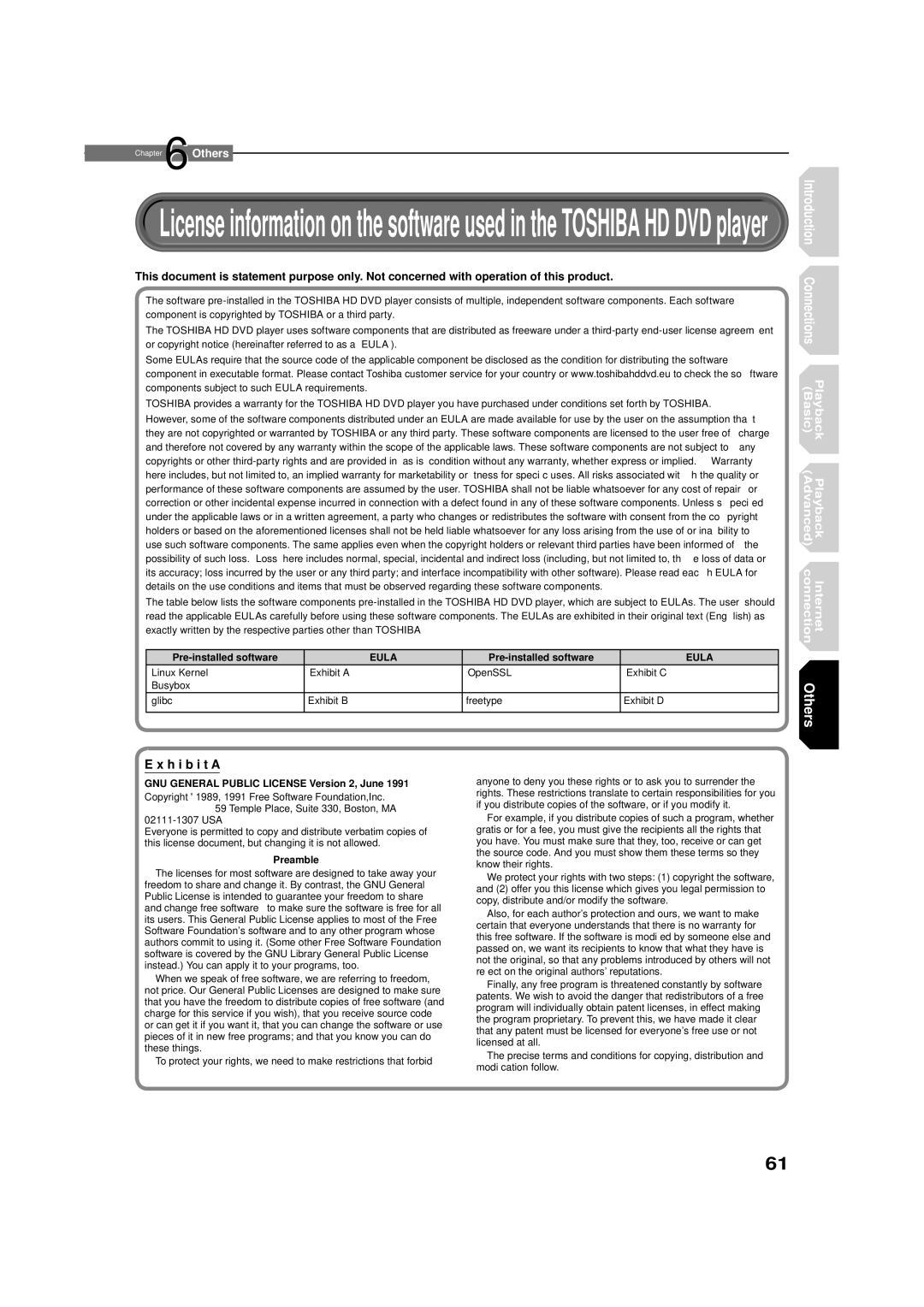HD-E1KE specifications
The Toshiba HD-E1KE is a pioneering high-definition DVD player that played a significant role in the transition from standard definition to high-definition media formats. Introduced as part of Toshiba's commitment to advancing home entertainment technology, the HD-E1KE offers a unique blend of features that cater to both movie enthusiasts and casual viewers alike.One of the standout features of the Toshiba HD-E1KE is its ability to play HD DVD discs, which utilize advanced video compression technologies such as VC-1, MPEG-2, and H.264. These formats enable the player to deliver stunning picture quality, with resolutions that can reach up to 1080p. This superior resolution brings a new level of detail and realism to films, making it a popular choice for those with HD-compatible televisions.
In addition to supporting HD DVDs, the HD-E1KE is also backward compatible with standard DVDs, ensuring that users can enjoy their existing collection of films without compromise. The player incorporates upscaling technology, which enhances standard definition DVDs to near high-definition quality. This feature is appealing for consumers who want to maximize their viewing experience without having to replace their entire disc collection.
The Toshiba HD-E1KE is equipped with numerous connectivity options, including HDMI outputs, which allow for easy integration with modern TVs and audio systems. The HDMI interface supports both video and audio signals in one cable, simplifying the setup process. Additionally, the player includes component and composite video outputs, offering flexibility for various display types.
Another noteworthy characteristic of the HD-E1KE is its audio capabilities. The player supports high-definition audio formats, including Dolby Digital Plus and DTS-HD, ensuring that users can experience rich, immersive sound that complements the stunning visuals. This is particularly important for home theater enthusiasts who seek a comprehensive audio-visual experience.
The user interface of the Toshiba HD-E1KE is designed for ease of use. With an intuitive menu layout, users can easily navigate through their options and access additional features such as parental controls and custom settings. Furthermore, the remote control is ergonomically designed, providing convenient access to all functions without overwhelming the user.
In summary, the Toshiba HD-E1KE is an impressive high-definition DVD player that aligns with the demands of today’s home entertainment systems. Its support for HD DVD playback, upscaling capabilities for standard DVDs, robust audio features, and versatile connectivity options make it a noteworthy choice for any media lover seeking to elevate their viewing experience. With a combination of quality, performance, and user-friendly design, the HD-E1KE remains a significant player in the evolution of home video technology.

